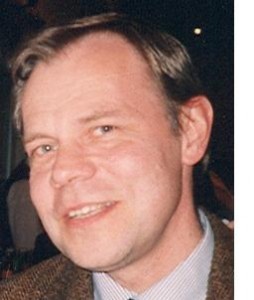In this issue of Neuropenews, we open a new space, the Scientific Corner, which will be reporting on issues related to area of scientific activity of the EAN and activities of the EAN Scientific Committee.
Search results for
"paper"
-
-
Scientific Corner
Scientific Corner: Practical recommendations for the process of proposing, planning, and writing a neurological management guideline by EAN task forces
June 1, 2015by Maurizio A. Leone1, Magdalena Keindl2, Anthony H. Schapira3, Günther Deuschl4, Antonio Federico5 The EAN considers the production of neurological guidelines a major obligation, as this is a primary tool to improve clinical practice in neurology. The Scientific Committee (SC)… Continue Reading -
As in the previous year, Neuropenews asked EAN committee members, panel chairs, speakers etc. which session one should not miss at the upcoming congress in Berlin, June 2015. Please find their answers below! Benedikt Schoser, speaker at Symposium 3 “Modern… Continue Reading
-
Interviews
Interview with President of the European Headache Federation: Dimos-Dimitrios Mitsikostas
April 1, 2015Gian Luigi Lenzi (GLL): As President of the EHF, can you illustrate the role you would like EAN to cover within the world of European Neurology? Dimos-Dimitrios Mitsikostas (DDM): The European Headache Federation represents all national Headache Societies in Europe and neighbouring nations. Since its foundation in 1992, EHF has sought to improve the life of those affected by headache in this territory. Headache is by far the commonest neurological symptom and primary headache disorders are the most frequent neurological conditions affecting million Europeans. -
Top 10 Articles 2012 from keywords: Neurology, Neurological Sciences, Ageing and Dementia, Cerebroascular diseases/ Stroke, Clinical Neurophysiology, Cognitive neurology/neuropsychology, Critical care, Epilepsy, Headache and Pain, Infections & AIDS, Motorneurone diseases, Movement Disorders, Multiple sclerosis and Related Disorders, Muscle and neuromuscular… Continue Reading
-
Dr. Elena Moro, a young neurologist with multi-national and multi-continental training and experience, will be the new EDITOR-IN-CHIEF of Neuropenews. With the help and enthusiasm of Dr. Tim von Oertzen, the web-Editor, they will shortly propose a brand new web journal of our Academy, to the European Neurology community.
-
The first paper that I would like to point out to Neuropenews readers concerns a neurological syndrome that often I have personally disregarded, or linked to similar “foggy” presentations such as the Chronic Fatigue Syndrome. Serra J, Collado A, Solà R et al, have published in ANNALS OF NEUROLOGY, 12 february 2014, Vol 75, Issue 2, pages 196-208, a paper “Hyperexcitable C nociceptors in fibromyalgia” that initially escaped my attention (it was published one year ago) and that indicates how in fibromyalgia there is more than many neurologists (at least myself) previously thought.
-
Top 10 Articles 2012 from keywords: Neurology, Neurological Sciences, Ageing and Dementia, Cerebroascular diseases/ Stroke, Clinical Neurophysiology, Cognitive neurology/neuropsychology, Critical care, Epilepsy, Headache and Pain, Infections & AIDS, Motorneurone diseases, Movement Disorders, Multiple sclerosis and Related Disorders, Muscle and neuromuscular… Continue Reading
-
Gian Luigi Lenzi (GLL): How do you see the role of patient and carers organisations in society, and, specifically, Alzheimer Europe? Jean Georges (JG): Most Alzheimer associations were initially set up for three principal reasons: to provide information on Alzheimer’s disease and other forms of dementia, to provide support to people with dementia and their carers and to raise the awareness of the general public. Since the early days of the Alzheimer movement, some associations have taken on additional tasks such as lobbying governments for a greater recognition of dementia as a public health priority or funding dementia research.
-
The first paper that we like to indicate to the Neuropenews readers is “The paraventricular thalamus controls a central amygdala fear circuit”, published online in Nature on January 19, 2015. The authors are: Mario Penzo, Vincent Robert, Jason Tucciarone, Dimitri De Bundel, Minghui Wang, Linda Van Aelst, Martin Darvas, Luis Parada, Richard Palmiter, Miao He, Z. Josh Huang, and Bo Li. The paper can be obtained online here.
-
Other News
European Board of Neurology Examination: A Europe-wide challenge for young neurologists
February 1, 2015
by Jan Kuks The European Academy of Neurology facilitates collaboration in fields of science, health care and education within Neurope. On the other hand, the Section of Neurology (European Board of Neurology, EBN), being part of the Union of European… Continue Reading -
Neuropenews (NN) has as one of its constant features a Section, named “TOP 10”, with the list of the 10 most cited papers in the neurological literature over the preceding two (full) years, i.e. for the NN 2014 Issues, the publication years 2012 and 2013.
-
The first paper that I would like to point out to Neuropenews readers has attracted my attention because it concerns the impact of a “black-box” warning on the behaviour of a general and/or selected population. The paper has been published on the 30 October issue of the New England J of Medicine, by Richard A. Friedmanm (NEJM, 2014; 371;1666-1668): “Antidepressant’s Black-Box Warning – 10 years later”. The rate or suicidal thinking or suicidal behaviour was 4% in the treated cohort, in comparison to 2% in the placebo arm. Something to think about.
-
he number of patients with neurological diseases will rapidly increase in Europe during the next 50 years. For some of the neurological diseases even a doubling of the numbers of patients is expected. Therefore more neurologists are needed. One of the most important tasks of the EAN is to support all attempts to increase the attractiveness of neurology as a profession and to improve teaching for students, trainees and residents in our field.
-
Following a “golden century” that had started with Moritz Heinrich Romberg in 1832 (see the previous chapters of this series) German neurology entered its dark age in 1933. Legislation implemented by the “Nazi“ party banned many Jewish fellow citizens including physicians from their professions and from using their possessions.
